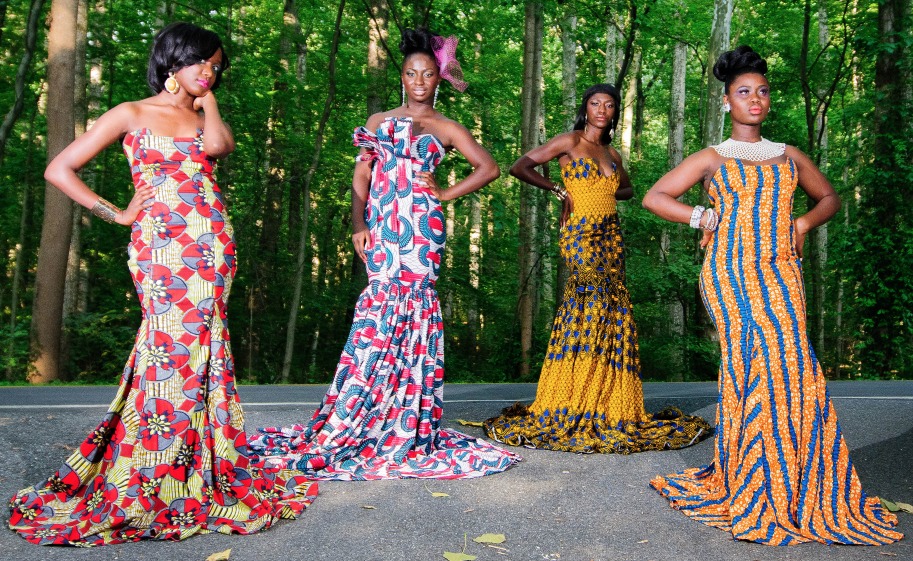
Ghana
Ghana the beat of Africa
Ghana is the magical land of colour and music; with its tropical climate, friendly people and rich wildlife – it’s no wonder that it is a popular African destination for locals and tourists alike. Ghana has a diverse and important history, that includes slavery as it was a midway stop for the Atlantic slave trade and the Ashanti attacks during the nineteenth century. Ghana is also known for being a musical country, with Djembe drums playing on many street corners. The warmth of the Ghanaian people will make your trip, one to remember.
As you arrive in Accra, trying out some Ghanaian food will be the easiest way to steep yourself in the culture and lives of people in Ghana. Sixteen minutes away from Kotoka International Airport is the Buka Restaurant. Ghanaian cuisine consists of grains, root vegetables and tomatoes. You can enjoy delicacies such as waakye (cooked rice and beans), guinea fowl groundnut soup and kontomire stew (taro leaf and meat/fish). Buka also offers Nigerian cuisine to indulge in. And as you remember sipping on your fresh coconut milk, you’ll recall what a truly African culinary experience it was.

http://ndudu-by-fafa.blogspot.co.za/2015/08/waakye-stew.html (Waakye)
As you plan your stay in Accra, a trip to Makola Market is a must. It’s a packed market, that will sweep you in. Offering fresh produce, garments, intricate beadwork and detailed wooden masks. It is forceful for first-time visitors due to the large crowds, but it is an experience not to be missed. This is the everyday life of Ghanaians and allows you to step into their lives for some time. You may find yourself drawn to the wooden souvenirs, necklaces and bracelets made from beads and kente garments, they are visually enticing and can make great memorabilia of your trip to Ghana.

http://acutebydesign.com/2015/10/norki-nater-memories-makola-market/ (Makola Market)
Ghanaian women are rather fashionable but their garments are for everyday use. Known as the “Ghanaian cloth”, kente is a silk fabric used to make the striking skirts, long dresses, blouses and wraps. These fabrics are hand-dyed and bursting with colours. A more daytime look is a skirt and top, whereas a long dress is used for more dressed up occasions. The wraps are used more to cover up their bodies and women accessorize with twisted headbands. Flat sandals are more practical due to durability and the tropical conditions. Ghanaian men, on the other hand, wear loose fitting pants with tunics made of kente for traditional functions and more rural areas of Ghana. In urban areas, westernised clothing is quite popular.

https://face2faceafrica.com/article/most-beautiful-african-women (Ghanaian fashion)
After a day bargaining your way through the Makola Market, stop over at Labadi Beach to enjoy the cool ocean breeze. It is Accra’s most famous beach and the bars, music and restaurants along it make it a buzzing spot. It is not a secluded beach, but it’s a favourite among locals.

http://mapio.net/pic/p-43263198/ (Labadi beach)
Staying along the coastline, approximately nine kilometres away from Labadi Beach is the iconic Jamestown Lighthouse. Built in the 1930’s, it stands as a reminder of the colonial era. Although not a known attraction for tourists, it offers a spectacular view from the top.

https://jamestownwalkingtours.wordpress.com/ (Jamestown Lighthouse)
A six-hour drive inland will take you to the Boabeng-Fiema Monkey Sanctuary in the Nkoranza North District. It’s a conversation effort of the tropical rainforest as well as wildlife and birdlife in the area. It hosts the Lowe’s Mona Monkey and Black & White Colobus Monkey. The people of Boabeng and Fiema consider the monkeys revered and seem to blend in with the villages of people around the sanctuary. Further North of the sanctuary is the Mole National Park. Envision rolling hills that open to plains of roaming elephants, chirping Senegal parrots and slithering snakes. Mole National Park, stands as Ghana’s largest national park and has a wide range of species. Though the four-hour drive from the sanctuary is strenuous, there is a motel on site offering basic amenities, so an overnight stay is recommended.

http://www.palacetravel.com/african-tours/ghana-togo-benin-including-the-annual-ouidah-voodoo-festival-jan-2015-2-5/ (Boabeng-Fiema Monkey Sanctuary)
In the opposite direction, lies the equally interesting Kakum National Park. Much smaller in size, but this park has a significant history. Kakum National Park was established in the 1930’s and was a supplier of timber to the industry in Ghana. But in 1994, the park was declared a national park. The swinging bridges add to the charm of this park, as you spot rare birds and find crocodiles frolicking in the streams below. Stay over at the Afrafranto campsite, it is an unforgettable experience in the wild African forest. Before you explore the rest of the Cape Coast, have breakfast at the café onsite and continue onward.
Three hours away from the capital and a mere hour away from Kakum National Park, lies the Cape Coast Castle. The dark remains of the country’s slave past. You will visit the dungeons, the museum showcasing Ghana’s history. Twenty minutes away from the Cape Coast Castle is the Elmina Castle, which is also worth a visit. Another fortress for enslavement in the past, Elmina Castle along with Cape Coast Castle once stood as significant sites in the slave trade route. Now empty shells, these buildings still are a reminder of torture, enslavement and basic human rights. Although traumatising, it is important visits every tourist of Ghana should make. It stands as a testament to the country’s traumatic past and the strength of overcoming it, to become a great nation today.

http://busyghana.com/before-independence-reflections-from-the-cape-coast-castle/ (Cape Coast Castle)
Travelling to Ghana is more than just another tourist destination. It plays a pivotal role in history, steeped in culture and has much more to offer than only landmarks. Learn a few words in Twi and dance to the djembe drums, for Ghana is the beat of Africa.
